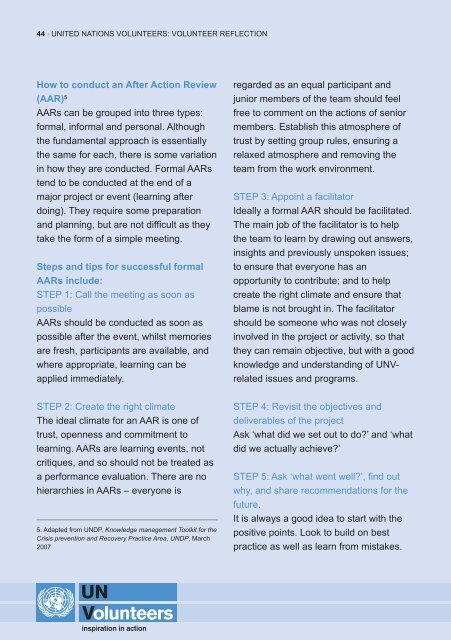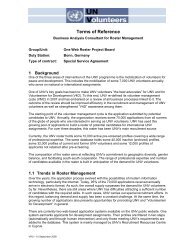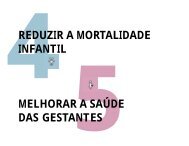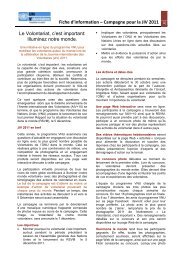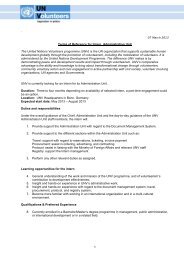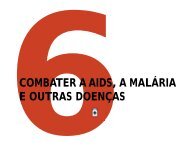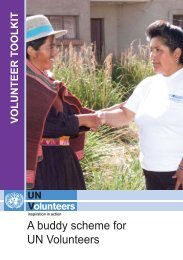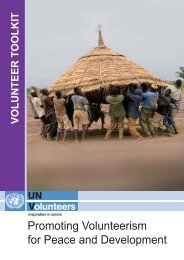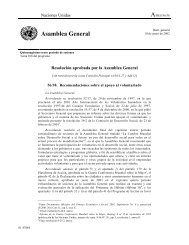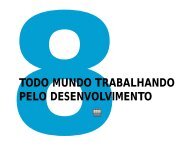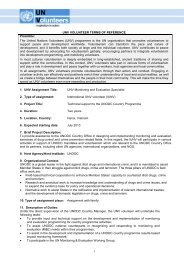Volunteer reflection - United Nations Volunteers
Volunteer reflection - United Nations Volunteers
Volunteer reflection - United Nations Volunteers
You also want an ePaper? Increase the reach of your titles
YUMPU automatically turns print PDFs into web optimized ePapers that Google loves.
44 . UNITED NATIONS VOLUNTEERS: VOLUNTEER REFLECTIONHow to conduct an After Action Review(AAR) 5AARs can be grouped into three types:formal, informal and personal. Althoughthe fundamental approach is essentiallythe same for each, there is some variationin how they are conducted. Formal AARstend to be conducted at the end of amajor project or event (learning afterdoing). They require some preparationand planning, but are not difficult as theytake the form of a simple meeting.Steps and tips for successful formalAARs include:STEP 1: Call the meeting as soon aspossibleAARs should be conducted as soon aspossible after the event, whilst memoriesare fresh, participants are available, andwhere appropriate, learning can beapplied immediately.regarded as an equal participant andjunior members of the team should feelfree to comment on the actions of seniormembers. Establish this atmosphere oftrust by setting group rules, ensuring arelaxed atmosphere and removing theteam from the work environment.STEP 3: Appoint a facilitatorIdeally a formal AAR should be facilitated.The main job of the facilitator is to helpthe team to learn by drawing out answers,insights and previously unspoken issues;to ensure that everyone has anopportunity to contribute; and to helpcreate the right climate and ensure thatblame is not brought in. The facilitatorshould be someone who was not closelyinvolved in the project or activity, so thatthey can remain objective, but with a goodknowledge and understanding of UNVrelatedissues and programs.STEP 2: Create the right climateThe ideal climate for an AAR is one oftrust, openness and commitment tolearning. AARs are learning events, notcritiques, and so should not be treated asa performance evaluation. There are nohierarchies in AARs – everyone is5. Adapted from UNDP, Knowledge management Toolkit for theCrisis prevention and Recovery Practice Area, UNDP, March2007STEP 4: Revisit the objectives anddeliverables of the projectAsk ‘what did we set out to do?’ and ‘whatdid we actually achieve?’STEP 5: Ask ‘what went well?’, find outwhy, and share recommendations for thefuture.It is always a good idea to start with thepositive points. Look to build on bestpractice as well as learn from mistakes.


